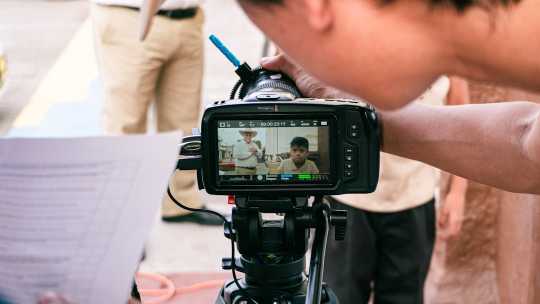The art of filmmaking involves a multitude of components that come together seamlessly to create a cohesive and engaging visual story. From screenwriting and directing to cinematography and editing, each step in the production process plays a crucial role in the final product. As a filmmaker, it is important to have a strong understanding of the various production techniques that can enhance the quality of your work. In this blog post, we will discuss the top five production techniques that every filmmaker should know.
1. Lighting techniques:
Lighting is an essential element in filmmaking that can greatly impact the mood and tone of a scene. Different lighting techniques can be used to create various effects, such as highlighting certain elements, creating shadows, or setting the overall ambiance. Understanding how to manipulate light effectively can help elevate the visual quality of your film.
One important lighting technique is three-point lighting, which consists of a key light, fill light, and backlight. The key light is the main source of illumination that highlights the subject, while the fill light softens shadows and adds depth. The backlight separates the subject from the background and creates a sense of dimension. By mastering three-point lighting, filmmakers can create visually appealing and well-balanced shots.
2. Composition techniques:
Composition plays a crucial role in framing shots and determining the visual appeal of a film. The way in which elements are arranged within the frame can convey meaning, evoke emotions, and guide the viewer’s attention. Understanding composition techniques can help filmmakers create dynamic and visually interesting shots.
One common composition technique is the rule of thirds, which involves dividing the frame into a grid of nine equal sections. Placing key elements along the intersecting points of the grid can create a visually pleasing and harmonious composition. Other composition techniques, such as leading lines, framing, and symmetry, can also be used to create aesthetically pleasing and engaging shots.
3. Sound design techniques:
Sound design is an often overlooked aspect of filmmaking that can greatly enhance the overall viewing experience. The use of sound effects, music, and dialogue can help create atmosphere, evoke emotions, and immerse the audience in the story. Understanding sound design techniques is essential for creating a polished and professional film.
One important sound design technique is the use of ambient sounds to create a sense of realism and depth. By adding subtle background noises, such as footsteps, chirping birds, or rustling leaves, filmmakers can enhance the sense of immersion and bring scenes to life. Additionally, the use of sound effects and music can help create tension, establish mood, and evoke specific emotions in the audience.
4. Editing techniques:
Editing is the process of assembling and arranging footage to create a cohesive and engaging narrative. The way in which shots are edited together can greatly impact the pacing, rhythm, and flow of a film. Understanding editing techniques can help filmmakers effectively convey their story and engage the audience.
One important editing technique is continuity editing, which involves maintaining consistency in terms of time, space, and action. By using techniques such as match cuts, eyeline matches, and establishing shots, filmmakers can create seamless transitions between scenes and maintain visual coherence. Additionally, the use of editing techniques such as jump cuts, montages, and cross-cutting can help create tension, build suspense, and enhance the overall storytelling.
5. Color grading techniques:
Color grading is the process of adjusting and enhancing the color and tone of footage to achieve a desired look or mood. By manipulating color and contrast, filmmakers can create a distinct visual style that sets the tone for their film. Understanding color grading techniques can help filmmakers enhance the overall aesthetic quality of their work.
One important color grading technique is the use of color correction to adjust the overall color balance and exposure of footage. By adjusting parameters such as brightness, contrast, saturation, and hue, filmmakers can create a cohesive and visually appealing look. Additionally, the use of color grading techniques such as color grading presets, LUTs (Look-Up Tables), and color wheels can help filmmakers achieve specific looks and styles for their films.
In conclusion, the top five production techniques discussed in this blog post are essential skills that every filmmaker should know. By mastering these techniques, filmmakers can enhance the visual quality of their work, create engaging and impactful stories, and establish a unique and distinctive style. Whether you are a seasoned professional or an aspiring filmmaker, understanding these production techniques can help elevate your craft and take your filmmaking to the next level.

